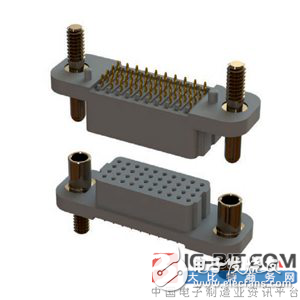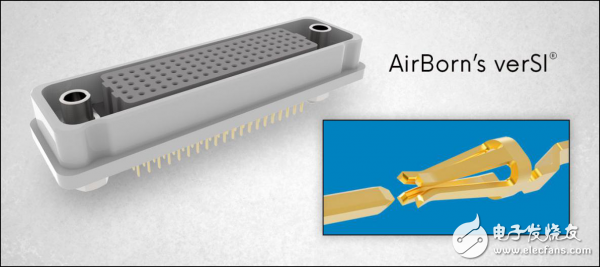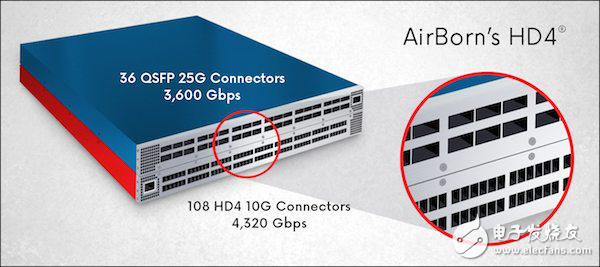When designing applications that utilize high-speed interconnects, it is critical to browse all potential speed bumps along the signal path. The following factors must be understood and mastered: stackup, tolerance, via design, trace width, plating, and copper etching to achieve the best signal path. Any design checklist should include connectors, and these connectors are often overlooked. Without careful inspection, the connector may seriously affect the signal integrity of the system.

The correct connector should provide several key elements:
Match impedance over target bandwidth
Insertion loss below target bandwidth
Reliable connection to PCB
Reliable connection to the cable system
To ensure that the connector can provide low loss and mating impedance for the signal, the scattering or s parameters must be viewed. The S-parameters specify the characteristics of the linear grid and determine the bandwidth and circuit losses, thus revealing its performance potential. S-parameter data is provided by the manufacturer as a way to characterize its connectors and should be the first standard considered when designing high-speed connectors. Designers should also convert and observe the s-parameters in the time domain, as well as the time domain reflectance (TDR) graph, and view the internal impedance curve.
Since there are many types of connectors (for example, terminal types, internal signal lengths, materials, etc.), designers need to understand how s-parameter files are created. Before blindly putting touchstone files into the simulation and believing the results, it is important to ask the supplier several questions, including:
1. Are the pins you want to match with the simulated pins?
2. How to terminate other pins?
3. What kind of layout is used in the data provided?
4. Are there any stumps?
5. What is the type of terminal used for characterization? (Eg plated through hole, surface mount, crimp)
6. How is the fixture embedded or what is included in the measurement?
7. Is this the exact part number I need?
Quality suppliers provide simulation and measurement-related data for each customer's intended use, thereby providing them with a more accurate assessment of the connector's impact on the design and enhancing their confidence in the simulation data.
Another important criterion when choosing a connector is the PCB termination option. Connectors usually have a variety of termination forms, including (but not limited to) surface mounting, crimping, and through-hole solder paste (PIH). Each form has its own unique advantages and disadvantages. The crimp terminal structure is very strong, which can provide maximum retention and connectivity for the PCB, but it also poses serious challenges for high-speed applications. Sending signals from a high-density press-fit connector may require a high-level PCB to extend the longest path through the plated hole to reach the connector. The elongated path and fixed diameter of the borehole may create significant discontinuities for higher frequency signals and may hinder high data rates.
Surface mount termination is more suitable for high-speed design, and the matching impedance of the connector launch point can obtain maximum flexibility. Designers can directly access the connector pads or use selected drill holes to provide a path through the PCB. In addition, the via hole can be buried in the PCB, or reverse drilling to reduce the unused through-hole stub, and improve the frequency response of the crimp termination method. This termination method provides the greatest benefit for high-frequency design, but it is not necessarily robust. Surface mount connectors usually require some additional reinforcement, such as mounting hardware, to ensure a secure connection to the PCB.
PIH termination is a mix between the first two styles. Similar to crimping, PIH terminals have shorter, non-crimping pins-inserted into plated-through hole footprints and soldered in place. The main difference is that its pins are much shorter, and the drill hole can be backdrilled to remove excess stumps on the signal. There are still challenges for this high-density connector to be built into a PCB. Selecting the supplier to provide these pins as short as 10mm can provide improved high frequency response and a strong connection to the PCB. When switching from a PCB to a connector, each termination type has some signal impedance discontinuities, and each termination type allows designers to change the degrees of freedom to minimize the impact of discontinuities on signal integrity.
When selecting a connector for high-speed design, it is also important to consider the way in which the mating connector is touched. There are several methods of mating contacts, and each method has its own unique set of advantages and limitations, which affect the signal integrity of the overall design. Edge-mounted connectors are a popular method of mating contacts. These connectors have spring fingers that slide along the PCB pads and can make electrical contact at a single point to minimize signal discontinuities, but can be harmful in high shock and vibration applications (or require additional retention methods). Many MSA standard designs (such as SFP, SFP +, and QSFP) use this type of electrical interface.
Crimp connections are more widely used in rugged applications. This fairly basic system consists of a female head with a socket and a male head with a spring pin. This type of mating has two or more contact points, which can provide multiple advantages over the single-point contact provided by edge-mounted mating systems. Especially designed for high reliability and high speed products, the multiple contact points shown in Figure 1 can achieve lower contact resistance and signal inductance, as well as a reliable and durable connection that can withstand extreme vibrations. However, pin and socket contacts may be longer than edge contacts, and if not designed properly, large discontinuities may occur. Therefore, it is crucial to study the s-parameters and impedance graphs provided by the manufacturer.

Figure 1: Airborn's verSI® crimp pin and socket connectors provide a robust and reliable low inductance connection in high-speed applications with extreme vibration.
In addition, in terms of speed design, it is important to consider throughput relative to floor space. Figure 2 compares two basic systems: one uses a 25G / channel QSFP connector and the other uses a 10G / channel HD4 connector. The resulting output (4320Gbps and 3600Gbps) shows that the superior density achieved by the connector design, in the same carrier system, 10G HD4 connector can produce higher data than the higher speed 25G QSFP connector Throughput, thereby saving component and energy costs, and even the data center square feet have more potential.

Figure 2: AirBorn 10GHD4® connectors designed for high density provide higher throughput than 25G QSFP connectors in the same carrier system, resulting in component and energy cost savings.
Ultimately, the designer needs to obtain a strong and undisturbed signal from point A to point B, and the correct connector is a key element of this journey. After all, even the highest speed connectors are unfavorable if they experience intermittent opening. The best quality suppliers provide a variety of connectors to provide high-speed and high-reliability solutions, end-to-end channel solutions, work closely with customers to evaluate their individual needs, and develop the best interconnection with minimal signal attenuation solution. Designers have a variety of connectors to choose from, so pay close attention to related data and choose wisely.
Digital Timer Switch Sockets,Digital Timer Outlet,Plug-in Time Controller,Plug In Timers,Sockets with Timers
NINGBO COWELL ELECTRONICS & TECHNOLOGY CO., LTD , https://www.cowellsockets.com
